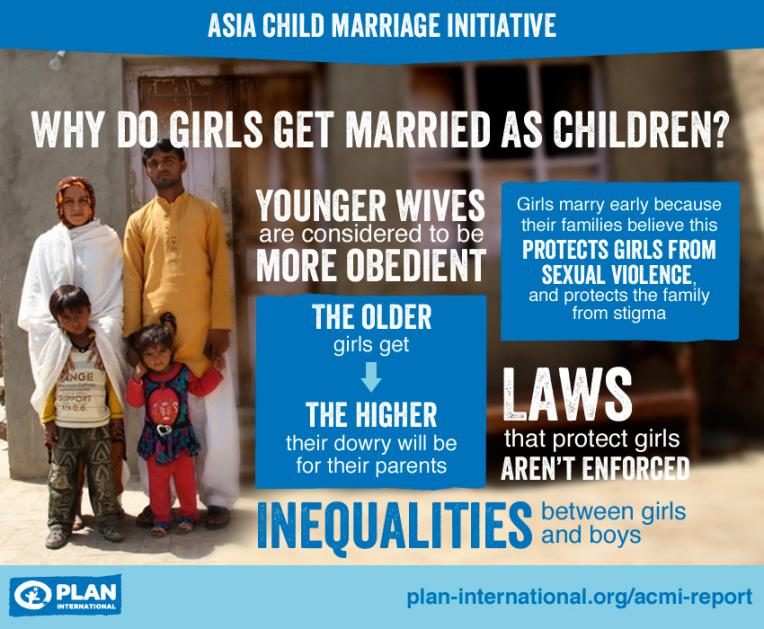9 NOVEMBER 2015
Research from Plan International uncovers the factors leading to high levels of child marriage in Asia and what can be done to protect girls from early and forced marriages.
A comprehensive survey of child marriage in Asia by Plan International has revealed deeply entrenched traditions and views are still forcing young girls into early marriage.
Disturbingly high rates of child marriage, particularly of girls, prevail in rural areas of Bangladesh, Pakistan, and Indonesia. Our research finds that child marriage, including of girls aged 12-14 years old, endures with widespread support among members of the community, parents, and children themselves.
Married too young: Explore the results in 3 countries
Getting the Evidence: Asia Child Marriage Initiative, was commissioned by Plan International and UK based research firm Coram International. Based on thousands of surveys and interviews with parents, community leaders, and children in communities in all 3 countries, the report details the underlying causes of child marriage alongside a suite of recommendations for countering the endurance of early marriage.
Poverty and lack of education increase child marriage
The primary reasons for such high rates of child marriage were found to be lack of access to education, economic opportunity, and health services, particularly for girls, alongside severe poverty and weak legal and enforcement mechanisms. Most disturbingly, the normalisation and justification of male sexual violence, and extreme gender inequity prevail in survey areas.
According to a 17 year old girl who participated in the research in Bangladesh, “If a girl doesn’t get married people will start to gossip about her. She will lose her reputation, and people will think she is having affairs. For a man it is less of an issue. He can remain single.”
Extraordinarily high rates of child marriage were found among females surveyed in Bangladesh, with 73% being married before they turned 18 years old. 27% of girls were married between the ages of 12 and 14. This compares to 2.8% of males in survey areas in Bangladesh.
In Indonesia, 38% of married females in survey areas were married under 18 years of age. The percentage of men married before they turned 18 was 3.7.
Pakistan had the lowest rate of child marriage of girls surveyed in the three countries, at 34.8%, with 15.2% under age 15. However, the rate of child marriage for boys was substantially higher, at 13%.
Early marriage can be stopped
Mark Pierce, Regional Director of Plan International in Asia says, “Ultimately, the endurance of child marriage lies in deeply ingrained gender discrimination, but economic factors, girls’ economic dependence, and tradition all play strong roles.”
“However, our research shows that changing communities’ attitudes and acceptance of child marriage is not a remote or insurmountable challenge; a combination of education, economic opportunity, access to health services and more strict, enforced legal frameworks make a substantial difference to the levels of acceptance and prevalence of child marriage.”
The report concludes that consistent and long term intervention by NGOs, community groups, governments, institutional, individual, community and family level actions would have a substantial impact on the rate and acceptance of child marriage in all three countries. It makes 40 practical, concrete recommendations.
The report and its recommendations will guide Plan International’s programming and advocacy regarding child marriage in Bangladesh, Pakistan, and Indonesia, as well as inform interventions in other countries.



